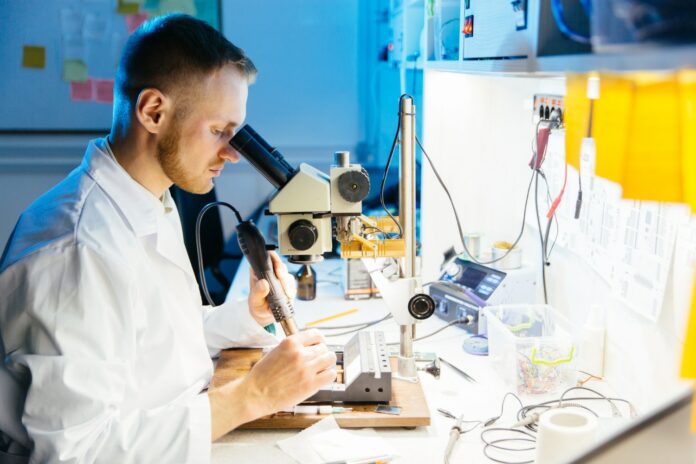Researchers at University of Münster have embarked on a study delving into the intricacies of peroxisomal processes, using a microscopic lens to explore the role of biological nanomachines in these vital cellular functions.
Peroxisomes are like the body’s waste disposal system, removing harmful substances and fats to prevent illnesses. Particular proteins called ‘Pex’ proteins ensure these detox units work correctly. Researchers at University of Münster, led by Prof. Christos Gatsogiannis, have used an advanced microscope to reveal, at the atomic level, how these intricate processes happen. Their groundbreaking study, now published in Nature Communications, was made possible thanks to the university’s state-of-the-art microscope.
Gatsby explains, “We can imagine peroxisomes like miniature factories specializing in different tasks. First of all, they are known for ‘detoxifying’ the cell. They act as cellular waste disposal units in our cells.” These cellular organelles, each just 0.5 micrometers in size (where 1 micrometer is equivalent to one-millionth of a millimeter), manage over 50 distinct processes, handling various waste materials like surplus fatty acids and environmental toxins.
Peroxisomes play a crucial role in our body’s fat-processing system. They break down fats and convert them into energy that our body needs for various functions. Too much of certain fats can build up without peroxisomes, leading to serious health problems, especially as we age. These problems include hearing or vision loss, Alzheimer’s, diabetes, or cancer.
To perform these tasks, specific enzymes are required. However, peroxisomes are enclosed in a biological membrane that these enzymes can’t easily pass through. Hence, they need to be brought in. This process demands energy and a group of proteins called the “Pex group.”
A Ph.D. student on the research team, Maximilian Rüttermann, compares this process to a truck transporting goods from one place to another. Just like a car needs a transportation system, energy, and careful planning to work efficiently, enzymes require a transportation protein and energy. Also, like a truck, the protein can be reused multiple times before breaking down or disintegrating.
Recycling used proteins is the most energy-consuming part of bringing proteins into peroxisomes. The leading player in this process is the peroxisomal AAA-ATPase complex Pex1/Pex6, often called a “biological nanomachine.” It unwraps and unfolds these spent proteins to be reused or disposed of. These AAA-ATPases act like a cleaning crew inside cells, keeping things tidy and functional for the cell’s needs.
Interestingly, many peroxisome problems are linked to mutations in Pex1 or Pex6, accounting for up to 60% of cases. This leads to a rare genetic disorder where patients can’t form peroxisomes. Sadly, affected patients usually don’t live long after birth, and there’s no known cure.
At the atomic level, Professor Christos Gatsogiannis’ research team has now revealed how the peroxisomal AAA-ATPase manages other enzymes to keep the detox units working correctly. They used cryogenic electron microscopy, which involves capturing millions of images from various angles while the “machine” is running and creating a three-dimensional model of how it works.
The team recently acquired a cutting-edge cryogenic electron microscope worth 7.5 million euros, allowing them to examine proteins and biological nanomachines at the atomic level, helping uncover the inner workings of cells.
Journal Reference:
- Rüttermann, M., Koci, M., Lill, P. et al. Structure of the peroxisomal Pex1/Pex6 ATPase complex bound to a substrate. Nature Communications. DOI: 10.1038/s41467-023-41640-9.
